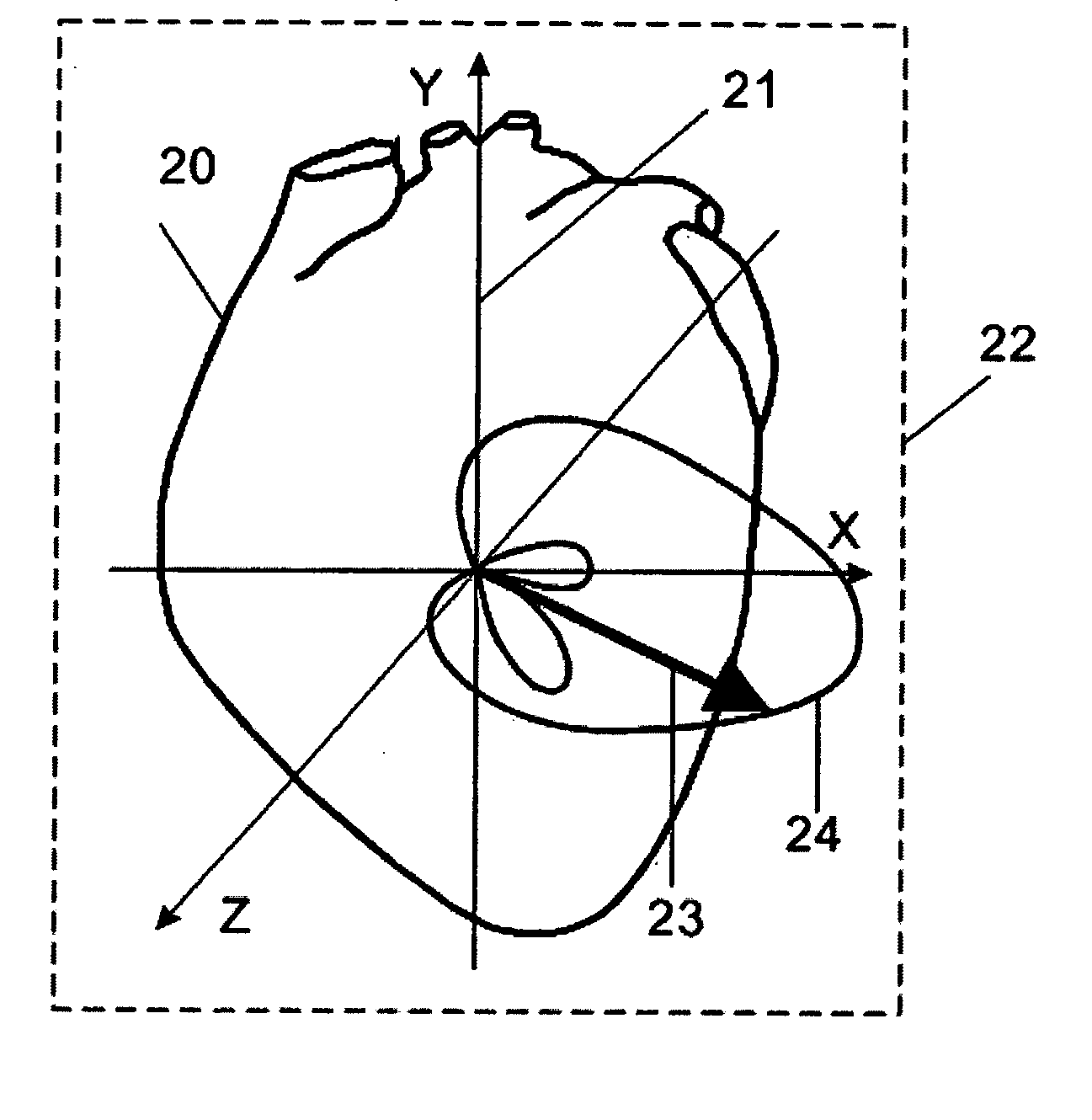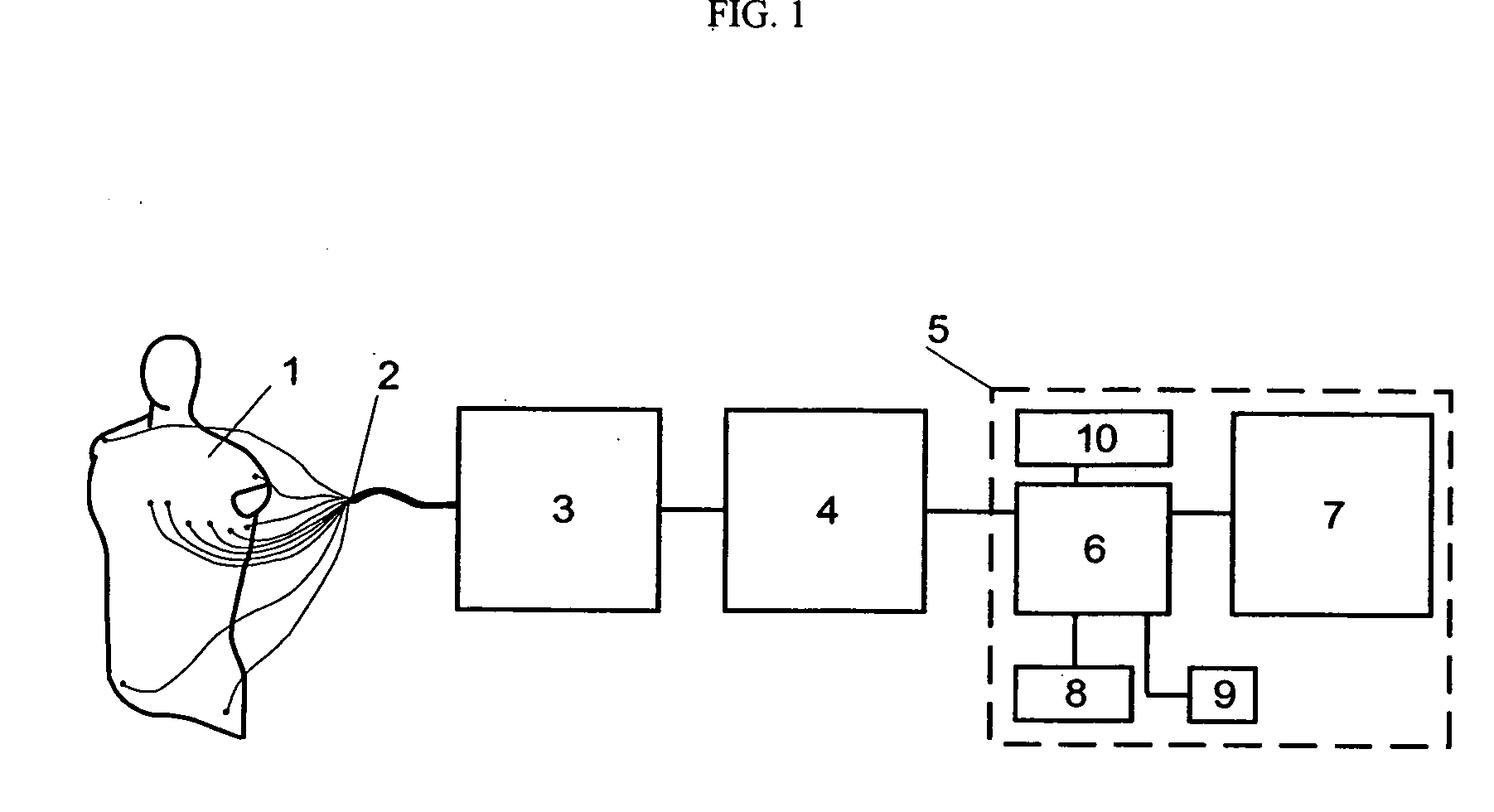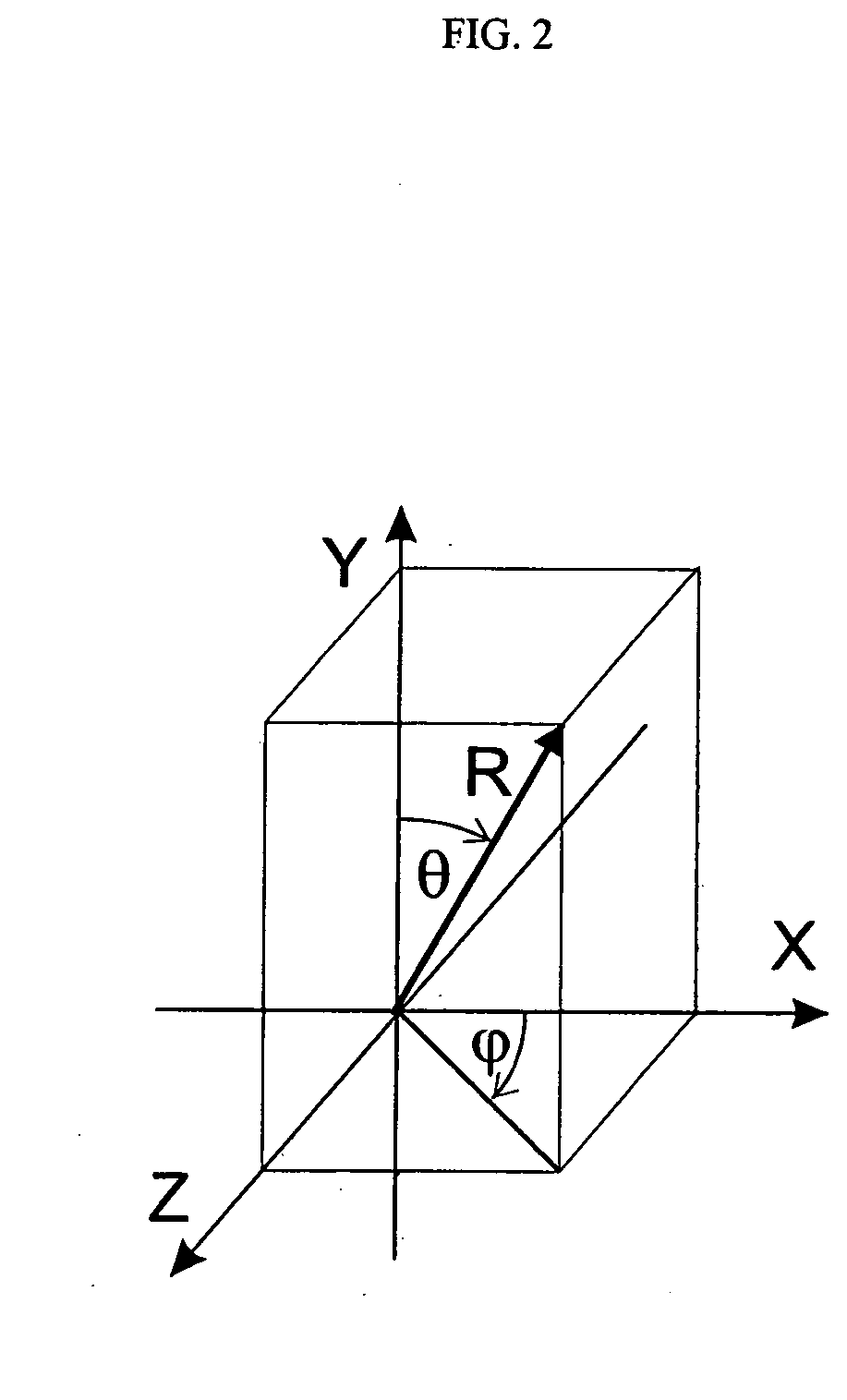Device and procedure for visual three-dimensional presentation of ECG data
a three-dimensional, visual technology, applied in the field of medical electronics, can solve the problems of long measurement procedure in comparison to ecg, loose connection between body potential map and heart anatomy, and complicated methods
- Summary
- Abstract
- Description
- Claims
- Application Information
AI Technical Summary
Benefits of technology
Problems solved by technology
Method used
Image
Examples
example 1
Calculation of a Heart Vector from Actual ECG Data
[0104] For example, a heart vector may be calculated from 8 standard ECG leads (recorded at leads I, II, V1, V2, V3, V4, V5, and V6). In this example, an Inverse Dower matrix is used to convert the data from the standard leads into the time variable heart vector that represents the size and orientation of a time varying electrical dipole approximating the electrical current (and voltage) of the heart.
[0105] The heart vector is described by {right arrow over (H)}:
{right arrow over (H)}=(X,Y,Z)={right arrow over (i)}+Y{right arrow over (j)}+Z{right arrow over (k)} (1)
[0106] The ECG data from eight independent ECG leads can be described as a vector, {right arrow over (V)}:
{right arrow over (V)}=(I, II, V1, V2, V3, V4, V5, V6) (2) [0107] leads I, II, V1, V2, V3, V4, V5, and V6 described the recorded potentials from the ECG recorded at the actual lead sites on the surface of a patient's body.
[0108] Using an Inverse Dower matrix (I...
example 2
Calculation of a Normalization Factor
[0128] In this example, a normalization factor (ρ) is calculated using six standard precordial leads. Vi(t) is the recorded voltage over time from a lead (e.g., the actual voltage from precordial leads 1 to 6, where i=1 to 6), and Vdi(t) is the derived voltage for each of the ECG leads (e.g., the same leads 1 to 6). As previously described, virtual lead voltages are calculated as a scalar product of the heart vector {right arrow over (H)} and a lead vector, {right arrow over (L)}i,
Vdi(t)={right arrow over (H)}(t)·{right arrow over (L)}i·ρi, (9) [0129] where {right arrow over (L)}i is defined having the direction of the position of the i-th electrode (e.g., precordial electrode 1 to 6), and ρi is an unknown normalization factor for each electrode. When normalizing the heart vector, the derived voltage is set approximately equal to the actual voltage recorded at the same lead:
Vdi(t)≈Vi(t) (10)
[0130] The unknown factor ρi for every lead can th...
example 3
Clinical Evaluation of Ischemia Detection
[0211] Preliminary clinical investigations have demonstrated that using the normalized ECG data as described herein may more reliably detect ST segment changes during myocardial ischemia, particularly in so-called “quiet zones” (e.g., regions of the heart where the standard ECG is relatively insensitive). A multi-center clinical study was initiated to investigate the diagnostic accuracy of the ECG analyzer described herein. Preliminary results compared the diagnosis of acute ischemia by evaluation of the ST segment using the standard 12-lead ECG and comparing it to the normalized ECG calculated as described herein.
[0212] This clinical trial was conducted in patients undergoing percutaneous transluminal coronary angioplasty (PTCA) in which the coronary artery was occluded with a PTCA balloon. Such patients serve as models for transient myocardial ischemia. Balloon occlusion assures complete obstruction of blood flow, and myocardium supplied ...
PUM
 Login to View More
Login to View More Abstract
Description
Claims
Application Information
 Login to View More
Login to View More - R&D
- Intellectual Property
- Life Sciences
- Materials
- Tech Scout
- Unparalleled Data Quality
- Higher Quality Content
- 60% Fewer Hallucinations
Browse by: Latest US Patents, China's latest patents, Technical Efficacy Thesaurus, Application Domain, Technology Topic, Popular Technical Reports.
© 2025 PatSnap. All rights reserved.Legal|Privacy policy|Modern Slavery Act Transparency Statement|Sitemap|About US| Contact US: help@patsnap.com



